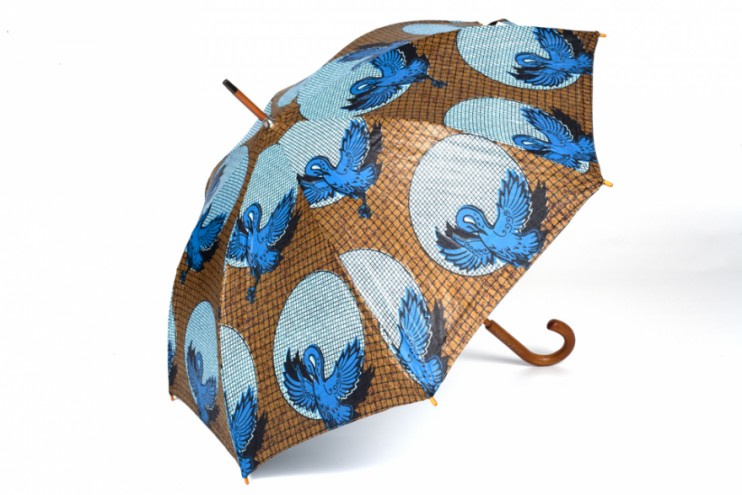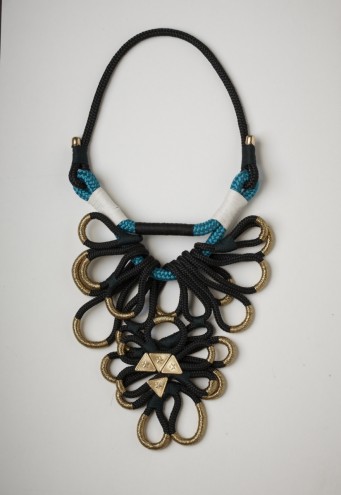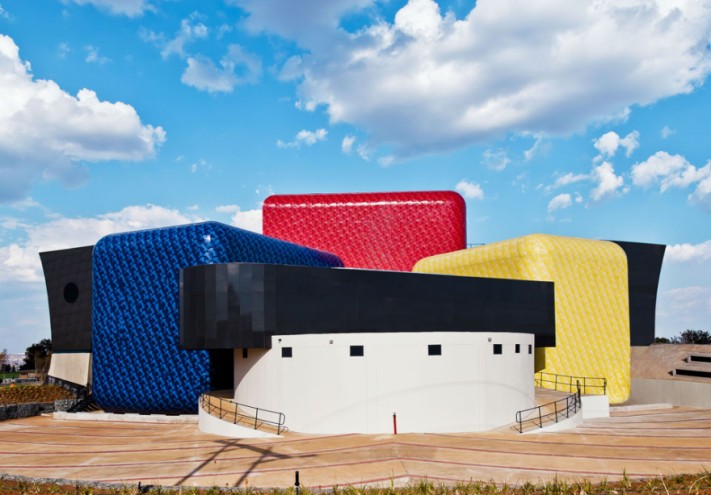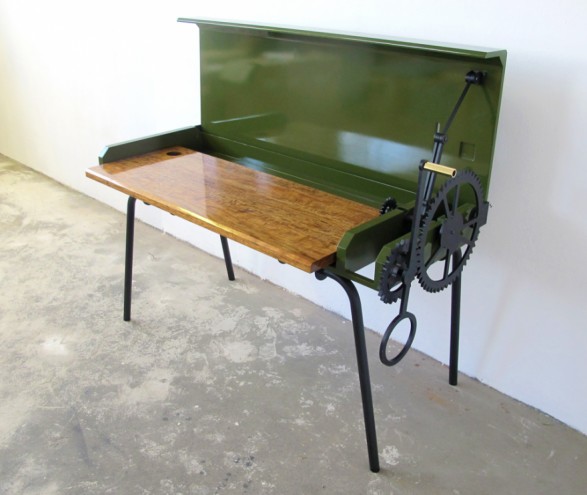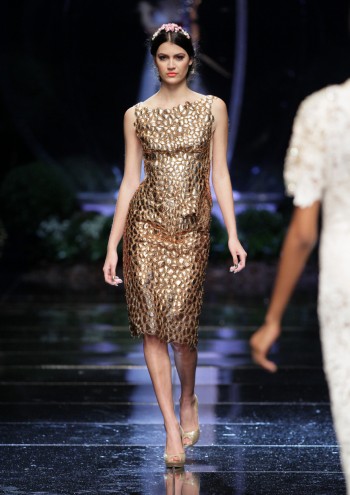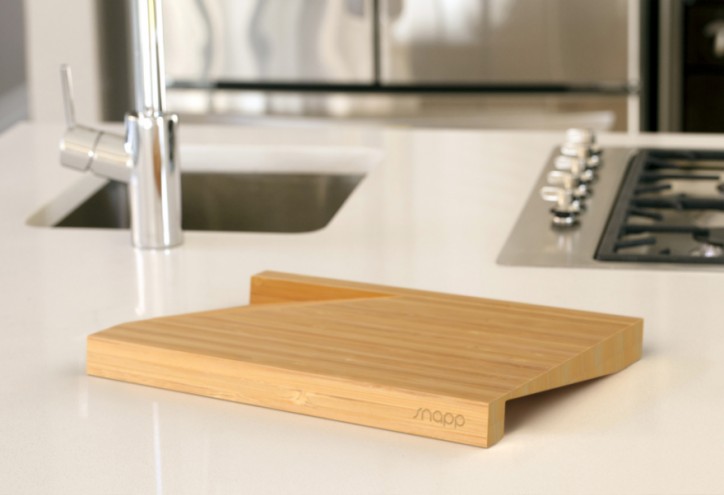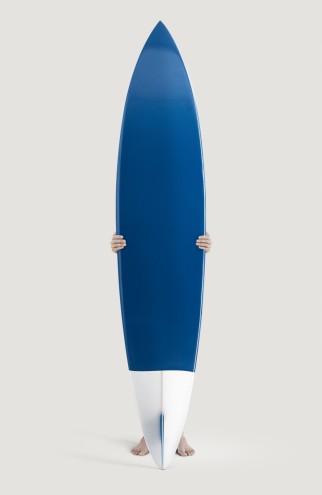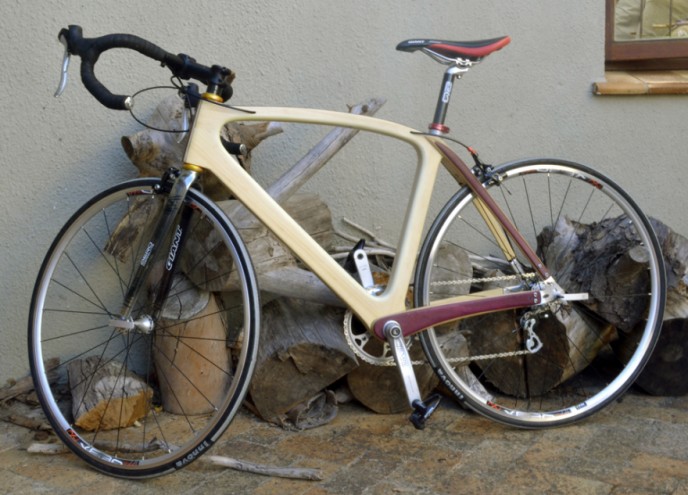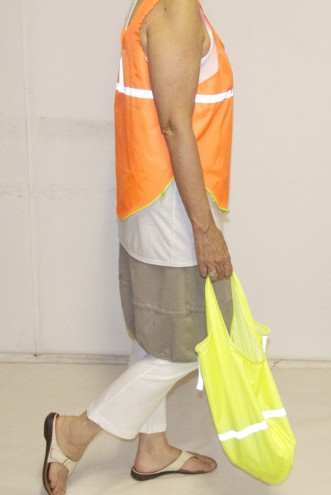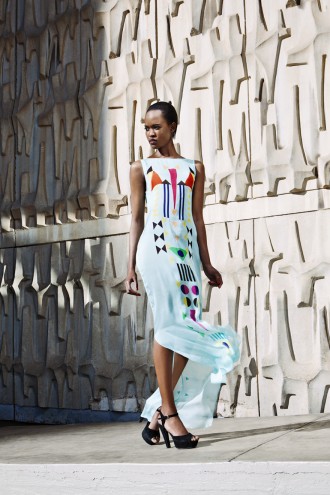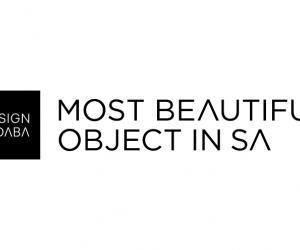Part of the Project
It’s our great pleasure to present the much-anticipated Most Beautiful Object in South Africa (MBOISA) 2013 finalists.
Featuring a diverse selection of objects, the MBOISA finalists were nominated by a mix of design journalists and cultural commentators in South Africa.
Every year Design Indaba invites the public to engage with the question of what constitutes beauty through the MBOISA award. More than just an object of visual delight, MBOISA encourage a wider definition of beauty - one that encapsulates attributes such as social significance, economic impact, usability, sustainability and even humour.
We know that beauty is in the eye of the beholder and that’s why the winner is determined by public vote. Vote for your most beautiful object in South Africa, via SMS. The winner will be announced on the afternoon of Sunday 3 March at Design Indaba Expo.
The designs of all the MBOISA finalists will be on show at Design Indaba Expo, open to the public from Friday 1 March to Sunday 3 March at the Cape Town International Convention Centre.
1. Zanzan Umbrella

By Gareth Cowden, Babatunde
Made using African wax prints, Babatunde’s range of accessories – including caps, trilbies, pith helmets, bow ties and clutch bags – fuse the iconic patterned fabric of West and Central Africa with Western shapes. The brand stands for strong African values and maintains a focus on quality details. The Zanzan umbrella is handmade with polycotton and a wooden frame. The shade is UV-resistant and waterproofed with a fabric sealer.
Nominated by Jackie Burger, editor, ELLE
“A very simple object inherent to our cultural landscape, done in an array of innovative prints! Finally, the humble umbrella steps up as a modern, colloquial and pop-culture accessory serving the dual purpose of functional fashion.”
Vote for the Zanzan Umbrella
SMS* “MBOISA Babatunde” to 43431
2. Golden Fold Necklace

By Katherine-Mary Pichulik
Katherine-Mary Pichulik makes one-of-a-kind neckpieces and jewellery from the humblest of materials: rope. A graduate of the Michaelis School of Fine Art at UCT, she began making jewellery out of materials she found on her travels through India – rope, a bead, bones… She has developed a distinctive language using intense colours, bold shapes and quirky details to create a range of fresh, contemporary tribal-inspired jewellery.
Nominated by Sarah Buitendach, editor, Sunday Times Home Weekly
“Katherine-Mary Pichulik’s pieces are bold and eye-catching, fun and sexy. I especially like the fact that her jewellery is made from humble, everyday materials such as coloured rope and string, which she transforms into embellishments that are very sophisticated.”
Vote for the Necklace
SMS* “MBOISA Pichulik” to 43431
3. The Soweto Theatre

By Lawrence Chibwe, Afritects Architects
This new landmark building transforms the world’s most well-known township into an area known not just as a place where people come from, but where people also go to. It is set in the heart of a culturally rich area within the neighbourhood of Jabulani, a planned entertainment precinct that is the first initiative of Soweto’s grander development plan. The building’s innovative design brings a heightened sense of hope to the area.
The red, yellow and blue colours of the theatre’s three “boxes” represent the vibrancy, personality and excitement associated with performance in Soweto. The 200 000 ceramic tiles adorning the boxes’ exterior walls were laid individually by local tradesmen. Their walls curve both horizontally and vertically, creating a parabolic shape that is the building’s signature feature and was one of the most challenging to engineer. Afritects designed the theatre by exposing the three performance boxes outward to the public, thereby inviting the community in while at the same time clearly defining each separate venue.
Nominated by Laureen Rossouw, editor, ELLE Decoration
“I love the confident, bold, colourful architecture of this iconic theatre in SA’s most famous township and the immediate impact it has on its surroundings. It has three indoor venues and an undercover outside venue for productions. It is also built close to the railway station, taxi rank and Rea bus stop in Jabulani, which gives commuters a chance to interact with and enjoy this inspiring and aspirational landmark. A great example of urban regeneration and a symbol of progress for all South Africans.”
Vote for the Soweto Theatre
SMS* “MBOISA Afritects” to 43431
4. Mechanical Bureau

By Joe Paine
This desk utilises an old-world mechanical solution to the modern-day problem of space-saving laptop storage. It was inspired by the late 19th and early 20th-century farm machinery often found rusting in the veld on a typical Highveld farm. It opens and closes using a system of gears, cranks, and rack and pinions. As one turns the handle the top lifts up and a rack and pinion pushes the timber worktop out towards you, providing extra workspace. When the user is finished working, the lid closes, hiding the laptop. The desk is part of the 2012 Southern Guild collection.
Nominated by Sumien Brink, content director, VISI
“In total sync with the new steam punk movement, Joe Paine has designed a mechanical space-saving desk that the trendiest urbanite will covet. Joe was inspired by discarded 19th century farm machinery. The desk is made from Cape teak, medium density fibreboard (MDF) and mild steel, and uses a system of gears and cranks to open and close. Small workspaces will never look the same again.”
Vote for the Mechanical Bureau
SMS* “MBOISA Paine” to 43431
5. Pebble Dress

By Gavin Rajah
This dress from Gavin Rajah’s Spring/Summer 2013 couture collection was created out of leather pieces that were moulded into pebble shapes and then embroidered onto mesh by hand. The leather pebbles are placed to create a gradation of colour with rose gold blending into chocolate. Rajah’s studio worked with the Klein Karoo Co-op on a technique to foil ostrich skins last year. After the foiled leather attracted interest from Chanel and other international fashion brands, the studio decided to create their own textiles in foiled leathers. Rajah developed the pebbled fabric in February 2012 and debuted it in his collection in July. The garment is handmade and has been created without seams in pure couture tradition.
Nominated by Malibongwe Tyilo, Blogger, Skattie What Are You Wearing?
“The Pebble Dress combines to great effect some of the most relevant design influences at the moment: leather, ombre, texture and craft. Their unity creates a completely resolved design piece. At first glance, your eye is attracted by the complete garment and it's almost scale-like appearance. A closer look reveals the incredible amount of work and precision that has gone into creating not only the garment but also an entirely new fabric.”
Vote for the Pebble Dress
SMS* “MBOISA Rajah” to 43431
6. Slice Cutting Board

By Jonathan Fundudis, Snapp Design
The Slice cutting board is Jonathan Fundudis’s exploration of the utilitarian, shorn of splendour and adornment. The design is characteristically defined by its purpose yet visually invites attention in any kitchen environment. The removal of two mirrored wedge shapes from both sides makes the board effortlessly easy to pick up and controls the funneling of food from its surface in one movement. This feature not only makes the product highly functional but gives it a sense of pared-down ornament as well. The board has been nominated by the German Design Council for a German Design Award 2013.
Nominated by Brandt Botes, founder, Studio Botes
“Something as simple and seemingly mundane as a kitchen cutting board is given added functionality through the process of design. A solution so clear it begs the question ‘Why has no one done that before?’ Designer Jonathan Fundudis mentions that his approach is to design objects that leave you with a ‘smile in the mind’. Simple and smart, this is exactly what the Slice cutting board says to me.”
Vote for the Slice Cutting Board
SMS* “MBOISA Snapp” to 43431
7. Gustav Greffrath’s Interpretation of the 1975 Pipeline Gun

Shaped by Spider Murphy for Dutchmann’s Delft Portfolio
Gavin Rooke’s Dutchmann label initiates creative projects that connect experienced master craftsmen with contemporary designers and artists. For the Delft Portfolio, Dutchmann asked 10 artists and designers to create artwork for ten surfboards shaped by Spider Murphy. The surfboards are identical to the original 1975 Pipeline Gun on which Shaun Tomson won the Hawaii Pipeline Masters. The artists were asked to work within the theme of Delftware, limiting their palettes to the cobalt hues that gave this 16th-century Dutch style of pottery its distinctive appearance. For his board designer Gustav Greffrath decided to bring the attention back to the object and the craft that went into shaping it. The traditional processes of sealing and laminating boards creates a high-gloss layer that is at first beautiful and beguiling. Yet it only covers up the true beauty of the matt, white object underneath. So Greffrath omitted any graphic elements to shift the focus to the shape of the board. He also left part of the board exposed, specifically the section featuring Murphy’s signature. The varied responses by the artists in this portfolio demonstrate the power of making, the diverse ways collaboration can offer up new ideas and, finally, the way the contemplation of a beautiful object can create a personal experience far beyond its intended purpose.
Nominated by Garth Walker, founder, Mister Walker
“Spider's uber-sleek hand-shaped 'gun' – surely an apt description – is itself a thing of beauty and an object of lust. Handmade and shaped by the eye, it’s an amazing creation - simple to look at, hold or caress. Suggesting speed, agility and efficiency, the board’s deceptively light weight defies its size. The interesting intervention is that the artist perfectly retained the essential 'gunness' of the original shape, yet the top half dipped in glossy Delft blue adds to the allure – and hints at the water for which it is intended…”
Vote for Gustav Greffrath’s Surfboard
SMS* “MBOISA Dutchmann” to 43431
8. Wood and Carbon Bike

By David Stubbs
David Stubbs came up with an innovative way of combining wood and carbon to create a lightweight but strong 10-speed racing bike. The frame’s exterior consists of laminated ash, bamboo and purple heart woods, strengthened by carbon fibre placed at strategic internal points. The result is an aesthetically beautiful, structurally sound bicycle unlike anything else that has been designed in South Africa. The wood is watertight to withstand the elements and creates the feeling of a smooth ride. This is a one-of-a-kind bike used by Stubbs himself, a leading shaper and manufacturer of world-class surfboards, longboards and kiteboards with a passion for making things with his hands.
Nominated by the Design Indaba Expo team
“This is what making is all about: one man in his studio, setting himself a challenge and lovingly creating something for himself rather than simply going out and buying it. Stubbs has invented his own solution for a durable but light bike by creating a protective skin of wood impregnated with carbon. As cycling begins to permeate South African culture, it is inspiring to see one artisan elevating bicycle design to a work of handmade art.”
Vote for David Stubbs’s bicycle
SMS* “MBOISA Stubbs” to 43431
9. City Press Newspaper, 27 May 2012 edition

Editor, Ferial Haffajee
In May 2012 a ruckus erupted over a provocative painting called “The Spear” by artist Brett Murray. The painting featured President Jacob Zuma with his genitals exposed, painted in the style of a Lenin propaganda poster. After City Press covered the exhibition and published a photograph of the painting, a nation-wide furore ensued. The artwork was defaced twice, live on camera and mass protests resulted through the streets to protect the president's dignity with the ruling party calling for a boycott on City Press for publishing the controversial piece. The May 27th issue of City Press went out anyway and, far from being boycotted, sold out everywhere.
Nominated by Lauren Beukes, novelist, Zoo City and Moxyland
“I chose this as my Most Beautiful Object of 2012 because it's a symbol of our fraught, messy, wonderful country and the problems we still face in talking about race and gender, but also because it's about the beauty of our most important democratic rights, the freedom of the press and freedom of expression to talk about it.”
Vote for City Press Newspaper
SMS* “MBOISA City Press” to 43431
10. Visibility Vest

By Ronel Jordaan
Following the death of an employee in a road accident involving a taxi, Ronel Jordaan conceptualised the idea of a bag made of polyester that is strong, and which could also be worn as an item of bright, reflective clothing when commuting during the day or at night. The multi-functional design is a departure for Jordaan, who is well-known for her sculptural pieces made from felt. She designed the form of the two patterns to accommodate people’s various shapes and sizes. The zip is curved to disperse weight and accommodate various hip sizes. A drawstring gives the bag a fashionable square shape. The vests range from simple to fashionable, offering something for everyone. As the bag folds into the size of a tennis ball, it easily fits into any handbag or jacket pocket.
Nominated by Gregor Naude, editor, Enjin
“Ronel Jordaan’s visibility shopping bag/vest is function made form. I think it nicely encapsulates the idea that, in addition to creating beautiful objects, good design offers solutions to everyday challenges.”
Vote for the Visibility Vest
SMS* “MBOISA Jordaan” to 43431
11. Aretha Dress

By Sindiso Khumalo
This dress was showcased at the 2012 Elle Magazine Rising Star Awards, for which Sindiso Khumalo was selected as a finalist. Named after legendary performer Aretha Franklin, the dress is made from digitally printed 100% silk chiffon. The print is designed with an understanding of where each element of the print will fall on the body. It was designed for Khumalo’s first collection, for Spring/Summer 2013. Khumalo studied architecture at UCT before moving to London to work for award-winning architect David Adjaye. Following that she went on to study an MA in Textiles at Central St Martins College of Art and Design, graduating with a distinction for her final project. Describing her aesthetic as “Afro Bauhaus gone Pop", she brings a heightened sense of colour and a collision of geometric prints into a luxury womenswear brand.
Nominated by Robynne Kahn, fashion director, special projects, Cosmopolitan and founder, afashionfriend.co.za
“I love her use of colour and graphic prints. The way she has used patterns and shapes in a modern, updated and fashion-forward way is exciting. She has taken what feels like a traditional, tribal influence and interpreted it live now. Her fashion and design aesthetic feels relevant and authentic.”
Vote for the Aretha Dress
SMS* “MBOISA Khumalo” to 43431
*SMSes cost R1.


